The fear of developing skin cancer is not unfounded — basal cell carcinoma and squamous cell carcinoma are relatively common, and while melanoma is rarer, it’s certainly prevalent too.
In addition to understanding the way melanoma develops in the body, it’s crucial that you’re regularly checking your skin for signs of abnormal cells and moles.
Most people have moles, freckles and skin abnormalities, the majority of which are harmless. But if you have a suspicious mark on the skin that changes in color or texture over time, you may have a cancerous lesion.
Having trouble identifying what suspicious marks or bumps on your skin might look like? The best way to remember is by using the ABCDEs of suspicious moles: Asymmetry, Border, Color, Diameter and Evolution.
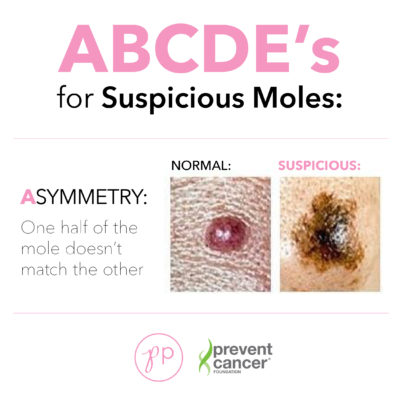 Asymmetry refers to the shape of a mole – if it’s larger on one side or another, it may be cancerous.
Asymmetry refers to the shape of a mole – if it’s larger on one side or another, it may be cancerous.
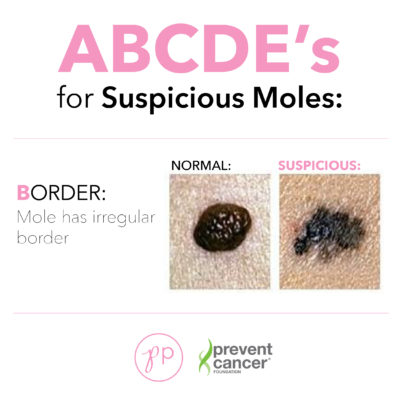 A normal mole will have a solid border, whereas an abnormal growth will be blotchy and inconsistent.
A normal mole will have a solid border, whereas an abnormal growth will be blotchy and inconsistent.
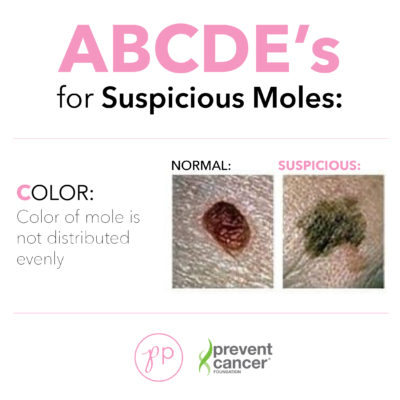
Varying color on a mole may be a sign that it’s cancerous.
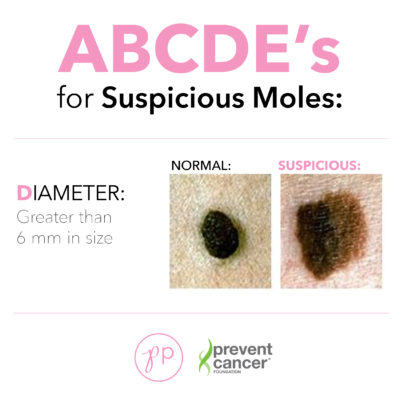
A mole that’s larger than 6 mm in diameter should be checked by a doctor.
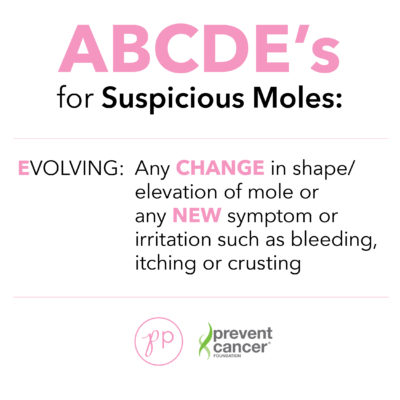 If a mole on your body is evolving — in shape, size, color, or consistency — make sure you have it looked at by your dermatologist.
If a mole on your body is evolving — in shape, size, color, or consistency — make sure you have it looked at by your dermatologist.




